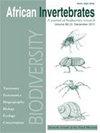研究南非的蚯蚓(环节动物:寡毛纲)
IF 1.1
4区 农林科学
Q3 ENTOMOLOGY
引用次数: 12
摘要
蚯蚓是南部非洲无脊椎动物多样性的重要组成部分,因为它们在土壤生态系统中具有重要作用,而且物种数量相对较多。截至2010年,南非已知的本土蚯蚓共有282种(大多数是地方性的),分属三个科:微毛虫科、三毛虫科和棘蚓科。此外,还记录到6科44种引种。然而,蚯蚓很少被纳入环境监测或保护计划,部分原因是取样和物种鉴定困难,许多取样方法具有破坏性和/或毒性。在本文中,我们回顾了最常用的蚯蚓取样技术,即从南非蚯蚓的数字化文献收集和在线全球搜索中筛选数据。通过对三种植被类型的案例研究,本文强调了分类学上的挑战和正确管理标本所需的努力。该研究为未来的抽样提供了建议,并强调了未来对该群体工作的一些关键优先事项。从2012年初的文献综述来看,很明显,收集技术在已发表的作品中往往没有得到充分的记录。从文献检索和数字化收集中共发现了1950年至2012年期间的10938份出版物,其中只有32篇论文记录了南非研究的抽样方法(主要是手工分类),这表明需要采用标准的抽样和报告协议。我们还测试了该领域中最流行的两种方法。2012年1月和2月在4个地点进行抽样,每个地点24块(12块挖掘,12块榨取)。共收集到2094条蚯蚓,可指定种名,在受干扰的地点和自然地点均以引进种为主。在一块50厘米× 50厘米× 20厘米深的土地上,一个由3到5个人组成的团队在45到60分钟的时间里挖掘和手工收集了所有遇到的蚯蚓标本。然而,花在整理和鉴定样本上的时间要多得多。虽然我们建议按照ISO (ISO11268-3, ISO23611-1)协议收集引入的分类群,但要获得南非蚯蚓的完整清单,将需要一系列采样技术;特别是,许多大型原生类群需要1 m × 1 m × 20 cm的大样地,而巨型蚯蚓的采集则需要不同的方法。标本鉴定需要的技能在该国是稀缺的,因此迫切需要培训和资助蚯蚓分类学的基础工作。一个绘图项目可以作为未来研究的焦点。在根据对南非蚯蚓的长期和富有成果的研究历史提出一些一般性建议时,我们乐观地认为,更好地了解这一群体将有助于我们改进对自然资源的利用,并对这一至关重要的地理群体提供深入的了解。本文章由计算机程序翻译,如有差异,请以英文原文为准。
Studying Earthworms (Annelida: Oligochaeta) in South Africa
ABSTRACT Earthworms are an important component of southern African invertebrate diversity, due both to their influential roles in soil ecosystems, and the relatively large number of species. As of 2010, there were 282 indigenous earthworm species (most endemic) known to South Africa belonging to three families: Microchaetidae, Tritogeniidae and Acanthodrilidae. In addition, 44 introduced species from six families had been recorded. However, earthworms are rarely included in environmental monitoring or conservation programmes—partly because sampling and species identification are difficult and many sampling methods are destructive and/or toxic. In this paper we review the earthworm sampling techniques most commonly used by screening data from a digitised literature collection on South African earthworms and on-line global searches. By examining a case study sampling of three vegetation types, this paper highlights taxonomic challenges and the effort required to properly curate specimens. The study provides recommendations for future sampling and highlights some key priorities for future work on the group. From the literature review in early 2012, it is clear that collection techniques are often insufficiently recorded in published work. A total of 10 938 publications from the period 1950 to 2012 were found from the literature search and digitised collection and from these only 32 papers recorded the sampling methodology (mainly hand sorting) for South African research, pointing to the need to adopt standard sampling and reporting protocols. We also tested two of the most popular methodologies in the field. Sampling was conducted in January and February 2012 at four sites, with 24 plots at each site (12 digging and 12 using mustard extraction). A total of 2 094 earthworms collected could be assigned a species name, with introduced species predominating at both disturbed and natural sites. It took a team of three to five people digging and hand collecting all earthworm specimens encountered in a plot of 50 cm × 50 cm × 20 cm deep around 45 to 60 minutes. However, much more time was spent curating and identifying samples. While we recommend following the ISO (ISO11268-3, ISO23611-1) protocol for collecting introduced taxa, to get a complete inventory of South African earthworms a range of sampling techniques will be required; in particular, a large 1 m × 1 m × 20 cm plot is required for many large bodied native taxa, and the collection of giant earthworms will require different approaches. The identification of specimens requires skills that are scarce in the country and so there is an urgent need for training and funding for fundamental work on earthworm taxonomy. An atlasing project could serve as a focal point for future research. In providing some general recommendations based on the long and fruitful history of research on earthworms in South Africa, we are optimistic that a better understanding of the group will help us to both improve our usage of natural resources and provide insights into this vitally important edaphic group.
求助全文
通过发布文献求助,成功后即可免费获取论文全文。
去求助
来源期刊

African Invertebrates
生物-动物学
CiteScore
1.00
自引率
0.00%
发文量
6
审稿时长
>12 weeks
期刊介绍:
African Invertebrates is an international peer-reviewed, open-access journal that focuses primarily on the taxonomy, systematics, biogeography, and palaeontology of Afrotropical invertebrates, whether terrestrial, freshwater or marine. Aspects concerning biology, ecology, and conservation may also be considered where these relate to the primary focus areas. Papers dealing solely with biology, ecology, physiology, pests and pest control should be submitted elsewhere.
 求助内容:
求助内容: 应助结果提醒方式:
应助结果提醒方式:


